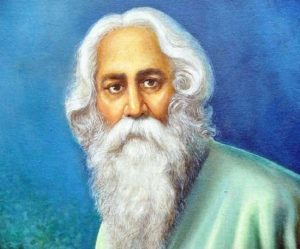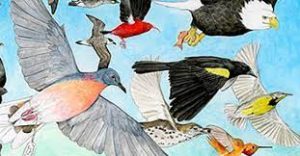Today Current Affairs: 10th May 2022 for UPSC IAS exams, State PSC exams, SSC CGL, State SSC, RRB, Railways, Banking Exam & IBPS, etc
Table of Contents
Concession In Revenue Share To Promote Coal Gasification:

To help India become energy independent, the Ministry of Coal has proposed 50% concession in revenue share to promote coal gasification.
- If the successful bidder consumes the coal produced either in its own plant(s) or plant of its holding, subsidiary, affiliate, associate for coal gasification or liquefaction or sells the coal for coal gasification or liquefaction on an yearly basis, subject to conditions that at least 10% of scheduled coal production as per approved mining plan for that year shall be consumed or sold for gasification or liquefaction, then the bidder can avail of concessions.
Coal Gasification:
- It is considered a cleaner option compared to burning coal.
- It is the process of producing syngas, a mixture consisting of carbon monoxide (CO), hydrogen (H2), carbon dioxide (CO2), natural gas (CH4), and water vapour (H2O).
- It facilitates utilization of the chemical properties of coal
- During gasification, coal is blown with oxygen and steam while also being heated under high pressure.
- During the reaction, oxygen and water molecules oxidize the coal and produce syngas.
- Benefits:
- Transporting gas is a lot cheaper than transporting coal.
- Help address local pollution problems.
- Has greater efficiency than conventional coal-burning.
Lunar Eclipse Blood moon:

On 16 May 2022, a total lunar eclipse or Chandra Grahan will occur over South America, most of North America and parts of Europe and Africa.
- This will be the second eclipse of the year, after the April 30/May 1 partial solar eclipse that was visible in parts of the southern hemisphere.
- During this, the first Blood Moon of 2022 will also become more clearly visible.
- During a total lunar eclipse, the Moon usually turns a deep, dark red because it is illuminated by light that has passed through the Earth’s atmosphere and has been bent back towards the Moon by refraction.
- A total lunar eclipse occurs when the Moon and the Sun are on exact opposite sides of Earth.
Blood Moon:
- The red colour is because of the way light travels through the Earth’s atmosphere. Sunlight is made of several colours and they all have different wavelengths.
- Depending on the way they travel through our atmosphere, we see different colours. That’s why the sun and sky have different colours during sunrise and sunset.
- Blues and purples have shorter wavelengths and scatter in our atmosphere, giving the sky its inky colour, but reds and oranges have the highest wavelengths and pass through our atmosphere before it is bent or refracted around Earth, hitting the surface of the Moon and making it red.
Supermoon:
- A supermoon occurs when the Moon’s orbit is closest to the Earth at the same time that the Moon is full. In a typical year, there may be two to four full supermoons and two to four new supermoons in a row.
Gurudev Rabindranath Tagore Birth Anniversary:

The Prime Minister on 9th May, 2022 paid tribute to Gurudev Rabindranath Tagore on his birth anniversary.
- According to the Bengali calendar, the Tagore Jayanti falls on the 25th day of the Boishakh month.
- He was born in Calcutta on 7th May 1861.
- He was also referred to as ‘Gurudev’, ‘Kabiguru’, and ‘Biswakabi’.
- He is regarded as the outstanding creative artist of modern India and hailed by W.B Yeats, Rabindranath Tagore was a Bengali poet, novelist, and painter, who was highly influential in introducing Indian culture to the west.
- He was an exceptional literary figure and a renowned polymath who singlehandedly reshaped the region’s literature and music.
- He was a good friend of Mahatma Gandhi and is said to have given him the title of Mahatma.
- He had always stressed that unity in diversity is the only possible way for India’s national integration.
- He had spoken at the World Parliament for Religions in the years 1929 and 1937.
- Contributions:
- He is said to have composed over 2000 songs and his songs and music are called ‘Rabindra Sangeet’ with its own distinct lyrical and fluid style.
- He is responsible for modernising Bengali prose and poetry. His notable works include Gitanjali, Ghare-Baire, Gora, Manasi, Balaka, Sonar Tori, He is also remembered for his song ‘Ekla Chalo Re’.
- He published his first poems aged 16 under the pen-name ‘Bhanusimha’.
- He not only gave the national anthems for two countries, India and Bangladesh, but also inspired a Ceylonese student of his, to pen and compose the national anthem of Sri Lanka.
- Besides all his literary achievements he was also a philosopher and educationist who in 1921 established the Vishwa-Bharati University, a university that challenged conventional education.
- Awards:
- In 1913 he was awarded the Nobel Prize in Literature for his work on Gitanjali.
- He was the first non-European to receive the Nobel Prize.
- In 1915 he was awarded knighthood by the British King George V. In 1919, following the Jallianwalla Bagh massacre, he renounced his Knighthood.
- Death:
- He died on 7th August 1941 in Calcutta.
Webinar On “Export Promotion Of Tissue Culture Plants’’:

The Centre through the Agricultural and Processed Food Products Export Development Authority (APEDA) conducted a webinar on “Export Promotion of Tissue Culture Plants’’ such as Foliage, Live Plants, Cut Flowers, and Planting Material” with Department of Biotechnology (DBT) accredited tissue culture laboratories spread across India.
- The aim is to boost exports of tissue culture plants.
- Tissue Culture is the production of new plants from a small piece of plant tissue or cells removed from the growing tips of a plant in a suitable growth medium.
- In this process the growth medium or culture solution is very important as it is used for growing plant tissue because it contains various plant nutrients in the form of ‘jelly’ known as agar and plant hormones which are necessary for the growth of plants.
- India is bestowed with knowledge, biotech experts with vast tissue culture experience as well as with a low-cost labour force to help produce export-oriented quality planting material.
- All these factors make India a potential global supplier of an extended and diversified range of quality flora to the international market and, in turn, earn foreign exchange.
- APEDA is running a Financial Assistance Scheme (FAS) to help laboratories upgrade themselves so as to produce export quality tissue culture planting material.
- It also facilitates exports of tissue culture planting material to diversified countries through market development, market analysis and promotion and exhibition of tissue culture plants at international exhibitions and by participating in buyer-seller meets at different international forums.
- The top ten countries importing tissue culture plants from India are:
- Netherlands, USA, Italy, Australia, Canada, Japan, Kenya, Senegal, Ethiopia and Nepal.
- In 2020-2021, India’s exports of tissue culture plants stood at USD17.17 million, with the Netherlands accounting for around 50% of the shipments.
Monkeypox Virus :

The U.K. health authorities have confirmed a case of monkeypox.
- The first-ever recorded occurrence of the monkeypox virus in the U.K. was in 2018, and since then a handful of cases have been confirmed by health authorities.
- The monkeypox virus is an orthopoxvirus, which is a genus of viruses that also includes the variola virus, which causes smallpox, and vaccinia virus, which was used in the smallpox vaccine.
- Monkeypox is a zoonosis, that is, a disease that is transmitted from infected animals to humans.
- Monkeypox virus infection has been detected in squirrels, Gambian poached rats, dormice, and some species of monkeys.
- Monkeypox causes symptoms similar to smallpox, although they are less severe.
- While vaccination eradicated smallpox worldwide in 1980, monkeypox continues to occur in a swathe of countries in Central and West Africa, and has on occasion showed up elsewhere.
Shigella:

The recent food poisoning event in Kerala that claimed the life of a 16-year-old girl who ate chicken shawarma at a restaurant was caused by Shigella germs.
- Shigella is a bacterial infection produced by the enterobacter family of bacteria and is one of the most common causes of diarrhoea worldwide.
- Shigellosis is the infection it causes.
- Infection with Shigella causes diarrhoea (occasionally bloody), fever, and stomach cramps in the majority of patients.
- The disease is easily transmitted through direct or indirect contact with the patient’s waste.
- Antibiotics should be provided to people who are sick or have underlying problems.
State Of World’s Birds Report: Highlights

The State of World’s Birds report was recently published.
- It is a peer-reviewed journal.
- It is BirdLife International’s flagship science publication, using birds to assess the condition of our ecosystems as a whole.
Highlights of the 2022 report:
- Around 48% of bird species worldwide are known or suspected to be undergoing population declines.
- In India, nearly 80% species are declining in numbers, and almost 50% plummeting strongly.
- Around 57% of North American species are recording declining trends, a net loss of almost 3 billion birds since 1970.
- The situation is similar in the European Union, where trends across 378 species indicate an overall decrease in breeding bird abundance of 17-19% between 1980 and 2017.
- The study found that bird species and abundance data from the tropics is scarce but in many countries such as India, citizen science driven data was available.
- The report has attributed the threat to almost half of the 10,994 recognised extant species of birds to the expanding human footprint on the natural world and climate change.
- The degradation and loss of natural habitats as well as direct overexploitation of many species are the key threats to avian biodiversity.
BirdLife International is a global partnership of non-governmental organizations that strives to conserve birds and their habitats.
- Headquarters: United Kingdom Cambridge, United Kingdom.
What Is Khalistan Movement?

Khalistan flags were found tied on the main entrance gates and walls of Himachal Pradesh legislative assembly recently.
- Slogans were also written on the walls of the assembly complex.
- The flags have now been removed by the administration.
- It is the fight for a separate Sikh state and owes its origins to the Punjabi Suba Movement.
- The Akali Dal – a Sikh-dominated political party – sought to create a separate Sikh Suba or Province.
- When the States Reorganization Commission, constituted to assess the demand for separate states by linguistic groups, made its recommendations, it rejected the Akali Dal’s demand.
- The state was trifurcated into Punjabi-majority Punjab, Hindi-majority Haryana and the Union Territory of Chandigarh. Some hilly regions of the state were merged into Himachal Pradesh.
Russia’s Victory Day:

May 9 is celebrated as “Victory Day” in Russia
- To commemorate the Soviet Union’s role in defeating Nazi Germany in World War II. It was first celebrated in 1965 under Soviet leader Leonid Brezhnev.
- It was occasionally marked in the Soviet era and revived by President Boris Yeltsin for the 50th anniversary in 1995.
- In 2008, Vladimir Putin made it an annual event featuring military hardware. 2022 marks the 77th anniversary.
- Victory Day is marked by a military parade in Moscow, and Russian leaders traditionally stand on the tomb of Vladimir Lenin in Red Square to observe it.
- On June 22, 1941, the German army began its invasion of the Soviet Union.
- Operation Barbarossa is the code name for the German invasion of the Soviet Union.
- To conquer the western Soviet Union and create more Lebensraum (living space) for Germany.
- Nazi Germany aimed to eventually exterminate the indigenous Slavic peoples by mass deportation to Siberia and repopulated the western Soviet Union with the Germans.
- Hitler arrogantly believed the war would last no longer than three months; his soldiers did not even bother to bring winter clothes.
- By 1943, the Germans’ rapid advance collapsed under the weight of the fierce Russian winter and partisan guerrillas.
Periodic Labour Force Survey:

In the period of October-December 2021, the unemployment rate for all those aged 15 years and above in the country’s urban areas slipped from 10.3 per cent that was recorded in the same quarter a year ago to 8.7 per cent. A periodic labour force survey by the National Statistical Office (NSO) showed this.
- The percentage of unemployed persons that are in the country’s labour force is known as the unemployment rate (UR).
- From October to December 2020, the UR was high as India was reeling under the impact of the lockdown that was imposed due to the COVID-19 pandemic.
- In the period from July to September 2021, the unemployment rate for all the individuals in the country aged 15 years and above was 9.8 per cent in the urban areas of India.
- This was highlighted in the 13th Periodic Labour Force Survey (PLFS).
- The unemployment rate for the females who are aged 15 years and above in the country’s urban areas declined from 13.1 per cent which was recorded during the same time period in 2020 to 10.5 per cent from October to December 2021.
- From July to September 2021 it was 11.6 per cent.
- The unemployment rate among the males in the country’s urban areas decreased from 9.5 per cent which was recorded a year ago to 8.3 per cent in October-December 2021.
- For July-September 2021 it was 9.3 per cent.
- Labour force refers to that part of the country’s population that supplies labour so as to conduct economic activities to produce goods and services. Hence, this includes both unemployed as well as employed individuals.
- Labour force participation rate : In Current Weekly Status (CWS) the labour force participation rate in the urban areas of India for all those aged 15 years and above was 47.3 per cent during the October-December 2021 quarter.
- During the July-September 2021 quarter, it was 46.9 per cent.
Rakhigarhi Skeletons:

DNA samples collected from two human skeletons unearthed at a necropolis of a Harappan-era city site in Haryana have been sent for scientific examination, the outcome of which might tell about the ancestry and food habits of people who lived in the Rakhigarhi region thousands of years ago.
- The skeletons of two women were found a couple of months ago at mound number 7 (named RGR 7 by the Archaeological Survey of India or ASI), believed to be nearly 5,000 years old.
- Pots and other artefacts were also found buried next to them in a pit, part of the funerary rituals back in the Harappan Civilisation era.
- Seven mounds scattered around two villages (Rakhi Khas and Rakhi Shahpur) in Hisar district are part of the Rakhigarhi archaeological site.
- RGR 7 is a cemetery site of the Harappan period when this was a well-organised city.
- At present RGR 1, RGR 3 and RGR 7 have been taken up for investigation.




